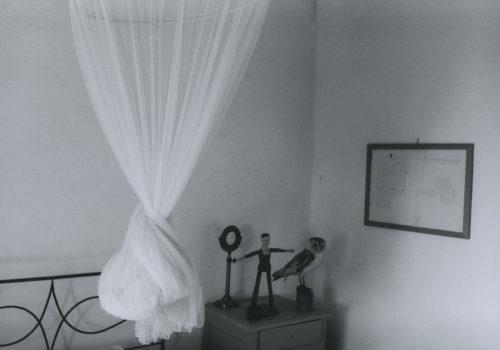After Rome, the exhibition of the French writer is being held this summer in Berlin. Images that explore the iperceivable of things and the photographer’s quest for self discovered late in life.
What would Hervé Guibert think seeing his photographs hanging on the walls of the KW, here in Berlin, more than thirty years after his death, he who had always considered himself an amateur photographer? In all sobriety, Guibert pictures of interior (and interior) images embody another story of the writer’s life. If these are his last literary works, in particular his autofiction À l’ami qui ne m’a pas sauvé la vie published in 1990 in which he describes his cohabitation with AIDS which consecrates him during his lifetime, Guibert had not ceased to write since La Mort propagande which he published in 1977, at only twenty-two years old. Photography, in parallel, has always accompanied him. He cherished it so much that he gave his singular voice to the columns of Le Monde where he was the first photographic critic, from 1977 to 1985 – his writings can be found in La Photo, inéluctablement published posthumously by Gallimard in 1999. In 2011, twenty years after his death, the MEP definitively acknowledged him as a photographer with the exhibition Hervé Guibert, Photographer.
Praise of the absent
These images are impulsive, they capture the furtive emotion of a present moment. An open book on the edge of a window, marbles on a crumpled white sheet, a crystal ball on the edge of a small table… Photography was, according to Guibert, a vector of desires. In the space that his images inspire, he depicts his own fantasies, like that of the seventh art, made explicit in “Le rêve du cinema”. He even went to Cannes, in his hotel room, he captured his suit jacket placed on a chair. The dream of the desert too, embodied by a photograph placed on a sofa covered with a sheet. This desert which can simply be an elsewhere. Photography seems to be the way to reveal a game, the game of one’s relationship to things, of one’s link to another. It was therefore going to allow him to paint a universe made up of what these images alternately suggest and silence, to narrate this unspeakable whose black and white would make the line. The monochrome that Guibert opposed to color, which he said was better suited to the moving image.
self-disclosure
Silhouettes, shadows and reflections… the clichés, like literary texts, play with figures of speech to the point of becoming poems. Both narrator and main character, both absent and yet so present, Guibert, by staging his fantasies, somehow draws up his autofiction. The recurrence of certain motifs then comes to register the allegorical power that these images take on. The book, as far as the eye can see in its library or alone on the ground, seen from above a chair or even his work table, with his sheets of paper, his pencils, his pen and his ink. His reflection, in the bathroom mirror or in picture frames, seems to convey the duality of this plural man whose apartment is the setting for the game. In his photo-novel Suzanne et Louise published in 1980, Guibert describes photography as follows: “I believe that it is other things, than lenses, which make ‘good photos’, immaterial things, of the order of love, or of the soul, of the forces which pass there and which are inscribed, fatal, like the text which is done in spite of itself, dictated by a superior voice…” And what makes a photographer, if not ultimately this ability to transmit a certain form of life ?
Noémie de Bellaigue
This and More by Hervé Guibert at the KW Institute for Contemporary Art until August 20, 2023.
KW Institute for Contemporary Art
Auguststraße 69
10117 Berlin
https://www.kw-berlin.de
















